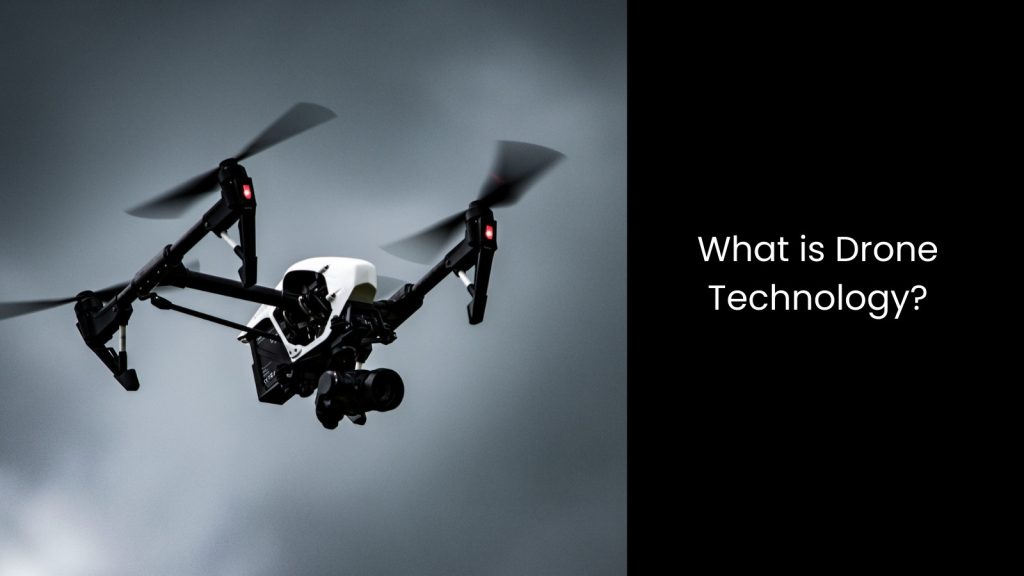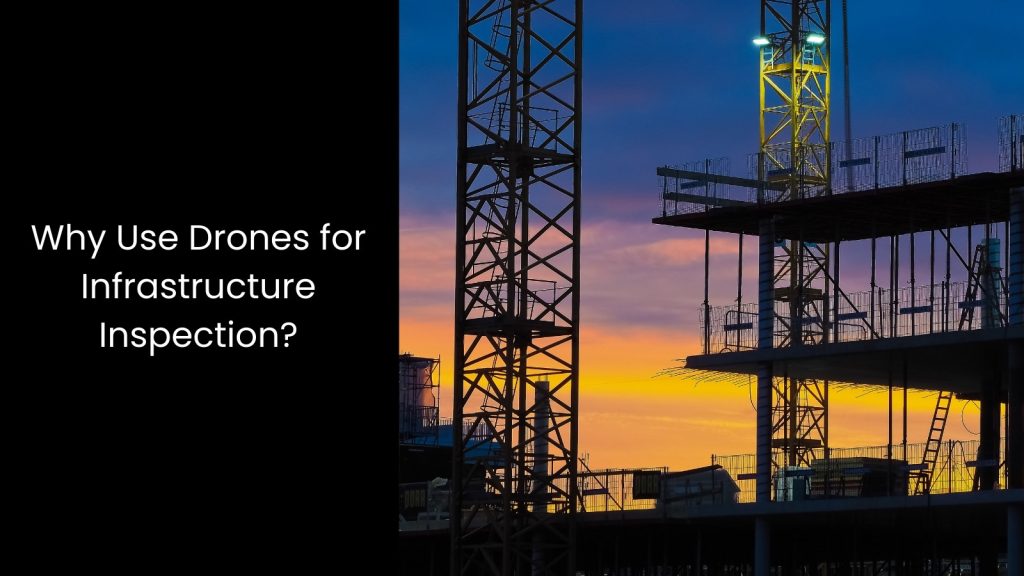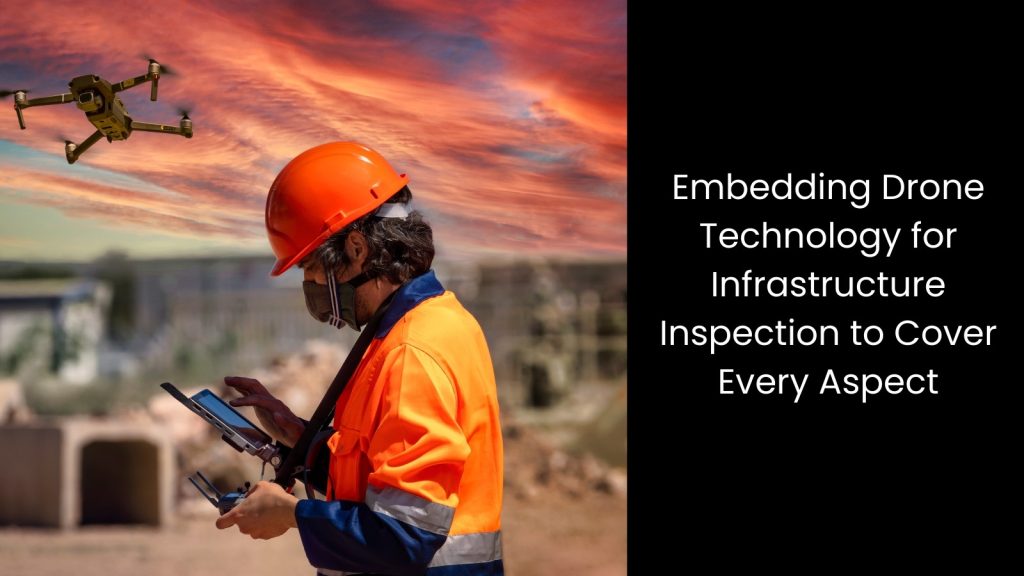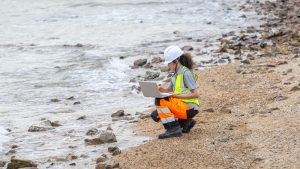Infrastructure inspection faces numerous challenges, from inaccessible locations to time-consuming manual assessments. Inspecting bridges, towers, and roads often involves complex setups and safety risks, creating obstacles for teams trying to meet deadlines and budget constraints. If you are in the maintenance scenario, you must be well aware of this, right? As these challenges grow, asset managers are turning to innovative solutions like drones. This technology offers a faster, safer, and more cost-effective way to monitor infrastructure without a doubt.
In this article, we explore why drones are quickly becoming the go-to solution for infrastructure inspection and maintenance.
In this article, we explore why drones are quickly becoming the go-to solution for infrastructure inspection and maintenance.
What is Drone Technology?

- Drone technology refers to the use of unmanned aerial vehicles (UAVs) controlled either remotely or autonomously through software for a wide range of tasks, including aerial photography, surveying, and site inspections.
- This technology combines lightweight materials, powerful motors, GPS navigation, sensors, and advanced imaging tools to create flying devices that gather information quickly and with remarkable precision.
- In site inspections, drone technology changes the way teams approach hard-to-reach or vast areas because it allows inspectors to get a complete view without the need for scaffolding, helicopters, or dangerous climbs.
- Instead of sending a person into risky spots or spending days on foot, drones scan a site in minutes, sending back real-time visuals and accurate measurements.
Why Use Drones for Infrastructure Inspection?

Safety Improvements
Safety is the number one concern when it comes to infrastructure inspection, and drone technology steps up as one of the smartest ways to handle that challenge.
Traditional inspections usually force workers to climb tall structures, hang off bridges, or enter dangerous zones, which puts them at serious risk of accidents, injuries, or even worse.
Drone technology flips the script because instead of sending people into harm’s way, teams can now fly drones equipped with high-resolution cameras and sensors to capture every detail safely from the ground. Whether it is checking a cracked highway bridge, inspecting a leaning transmission tower, or scanning the roof of an old building, drones make it possible to complete the job without putting a single life on the line.
Plus, drone inspections let teams spot issues early, which means less emergency work later and fewer last-minute risks.
Unlike traditional methods that sometimes rush inspections to minimise downtime, drones move fast while still getting quality results, helping everyone stick to safer timelines. In places like windy sites, coastal bridges, or high-voltage power lines, drone technology acts like an extra set of smart eyes that work with incredible accuracy without facing the hazards.
Traditional inspections usually force workers to climb tall structures, hang off bridges, or enter dangerous zones, which puts them at serious risk of accidents, injuries, or even worse.
Drone technology flips the script because instead of sending people into harm’s way, teams can now fly drones equipped with high-resolution cameras and sensors to capture every detail safely from the ground. Whether it is checking a cracked highway bridge, inspecting a leaning transmission tower, or scanning the roof of an old building, drones make it possible to complete the job without putting a single life on the line.
Plus, drone inspections let teams spot issues early, which means less emergency work later and fewer last-minute risks.
Unlike traditional methods that sometimes rush inspections to minimise downtime, drones move fast while still getting quality results, helping everyone stick to safer timelines. In places like windy sites, coastal bridges, or high-voltage power lines, drone technology acts like an extra set of smart eyes that work with incredible accuracy without facing the hazards.
Cost-Effectiveness Compared to Traditional Methods
It is always the money costs that make people rethink how they do infrastructure inspections, and that is where drone technology steps in to change the game in a big way. What does this mean?
Traditional inspection methods tend to demand expensive equipment like scaffolding, cranes, and helicopters, not to mention the need for large crews and long project delays that pile up extra costs fast. Instead of burning through budgets, inspectors can fly drones across sites and collect detailed data without all the extra gear and manpower.
This means drone technology cuts down on setup time, shortens inspection hours, and slashes the need for special permits or road closures, making projects way more affordable from start to finish. Even when dealing with huge structures like dams, bridges, or solar farms, drones handle the work in a few passes without draining resources.
Maintenance teams also save a lot on follow-up inspections because drones allow for frequent, smaller checks that stop big problems before they demand big repairs. On the other hand, since drones gather high-quality images, thermal scans, and 3D maps all in one go, companies skip multiple trips to the same site, stretching their dollars even further.
In a world where cutting unnecessary expenses matters more than ever, drone technology hands industries a smarter, faster, and budget-friendlier solution without losing quality or accuracy.
Traditional inspection methods tend to demand expensive equipment like scaffolding, cranes, and helicopters, not to mention the need for large crews and long project delays that pile up extra costs fast. Instead of burning through budgets, inspectors can fly drones across sites and collect detailed data without all the extra gear and manpower.
This means drone technology cuts down on setup time, shortens inspection hours, and slashes the need for special permits or road closures, making projects way more affordable from start to finish. Even when dealing with huge structures like dams, bridges, or solar farms, drones handle the work in a few passes without draining resources.
Maintenance teams also save a lot on follow-up inspections because drones allow for frequent, smaller checks that stop big problems before they demand big repairs. On the other hand, since drones gather high-quality images, thermal scans, and 3D maps all in one go, companies skip multiple trips to the same site, stretching their dollars even further.
In a world where cutting unnecessary expenses matters more than ever, drone technology hands industries a smarter, faster, and budget-friendlier solution without losing quality or accuracy.
Speed and Efficiency in Data Collection
It was a problem that old-school inspections usually dragged on because workers needed to climb, measure, photograph, and record everything manually over several days or even weeks, depending on the site size.
However, drone technology flips that slow process on its head because drones can scan massive bridges, tall towers, long pipelines, or huge construction sites in a few quick flights. With high-resolution cameras, LiDAR sensors, and real-time GPS mapping, drones grab detailed, accurate information faster than any crew could.
Instead of juggling clipboards, ropes, and ladders, teams receive ready-to-use visual data and measurements almost instantly, cutting down days of work into a few hours. Even better, drones can cover hard-to-reach angles without wasting extra time setting up scaffolding or special platforms.
As the drone soars and collects thousands of data points in one go, inspectors can focus on planning repairs and making smart decisions instead of spending days gathering basic information.
However, drone technology flips that slow process on its head because drones can scan massive bridges, tall towers, long pipelines, or huge construction sites in a few quick flights. With high-resolution cameras, LiDAR sensors, and real-time GPS mapping, drones grab detailed, accurate information faster than any crew could.
Instead of juggling clipboards, ropes, and ladders, teams receive ready-to-use visual data and measurements almost instantly, cutting down days of work into a few hours. Even better, drones can cover hard-to-reach angles without wasting extra time setting up scaffolding or special platforms.
As the drone soars and collects thousands of data points in one go, inspectors can focus on planning repairs and making smart decisions instead of spending days gathering basic information.
High-Resolution Imaging and Real-Time Reporting
Instead of relying on blurry photos, rough sketches, or secondhand notes, teams now fly drones packed with powerful cameras and sensors that capture sharp, detailed images from every angle imaginable.
Whether checking hairline cracks in a bridge, corrosion on a pipeline, or wear and tear on a dam, drone technology brings everything into focus with a clarity that traditional methods often miss. Real-time reporting steps it up even more because teams no longer have to wait days or weeks to see what the inspection found.
Further, drones send live visuals straight to a tablet or computer, letting inspectors make quick calls on repairs or maintenance needs while the drone still flies the site. Plus, high-resolution imaging gives engineers and decision-makers the chance to zoom in, analyse, and even create 3D models for deeper insights without setting foot on dangerous structures.
This powerful combination not only saves time but also lifts the quality of inspections to a whole new level. When projects face tight deadlines or safety concerns, drone technology gives real answers fast, helping teams stay on track without cutting corners.
Whether checking hairline cracks in a bridge, corrosion on a pipeline, or wear and tear on a dam, drone technology brings everything into focus with a clarity that traditional methods often miss. Real-time reporting steps it up even more because teams no longer have to wait days or weeks to see what the inspection found.
Further, drones send live visuals straight to a tablet or computer, letting inspectors make quick calls on repairs or maintenance needs while the drone still flies the site. Plus, high-resolution imaging gives engineers and decision-makers the chance to zoom in, analyse, and even create 3D models for deeper insights without setting foot on dangerous structures.
This powerful combination not only saves time but also lifts the quality of inspections to a whole new level. When projects face tight deadlines or safety concerns, drone technology gives real answers fast, helping teams stay on track without cutting corners.
Advanced Analytics Integration
This completely reshapes how teams use drone technology for infrastructure inspection, as it turns simple data into smart, action-ready insights without wasting any time. Instead of just snapping photos and collecting random numbers, drones now connect with powerful software that processes images, measurements, and maps into clear reports and forecasts.
This means engineers can spot tiny cracks, measure structural shifts, and even predict future damage long before it becomes a huge problem. Drone technology does not just stop at collecting information; it also feeds that data into machine learning programs and AI tools that help teams plan smarter maintenance schedules, budget repairs more accurately, and make faster, more confident decisions.
As soon as a drone finishes a flight, advanced analytics kick in to sort through thousands of data points, highlight risky areas, and suggest next steps, saving loads of time and avoiding guesswork.
Plus, when teams need to track changes over months or years, these smart systems easily compare old and new data to find patterns that human eyes might miss.
This means engineers can spot tiny cracks, measure structural shifts, and even predict future damage long before it becomes a huge problem. Drone technology does not just stop at collecting information; it also feeds that data into machine learning programs and AI tools that help teams plan smarter maintenance schedules, budget repairs more accurately, and make faster, more confident decisions.
As soon as a drone finishes a flight, advanced analytics kick in to sort through thousands of data points, highlight risky areas, and suggest next steps, saving loads of time and avoiding guesswork.
Plus, when teams need to track changes over months or years, these smart systems easily compare old and new data to find patterns that human eyes might miss.
Embedding Drone Technology for Infrastructure Inspection to Cover Every Aspect

As you can see, the potential of drone technology in infrastructure inspection is limitless. As we look toward the future, embedding drones into daily operations using advanced software suites will redefine the way we manage and maintain our structures. From safety to data analytics, the benefits are clear, making drone-powered inspections a must-have tool for forward-thinking industries across the globe.







